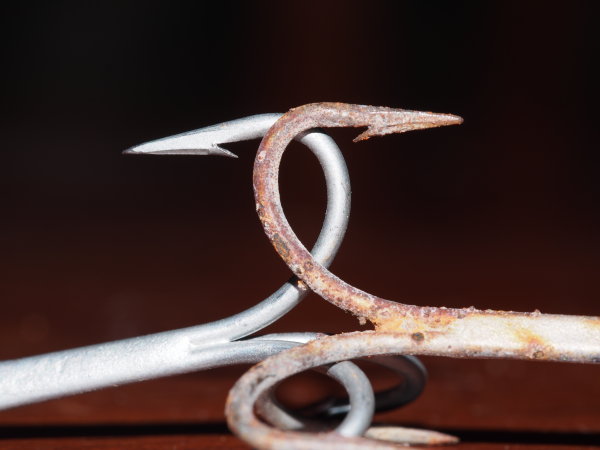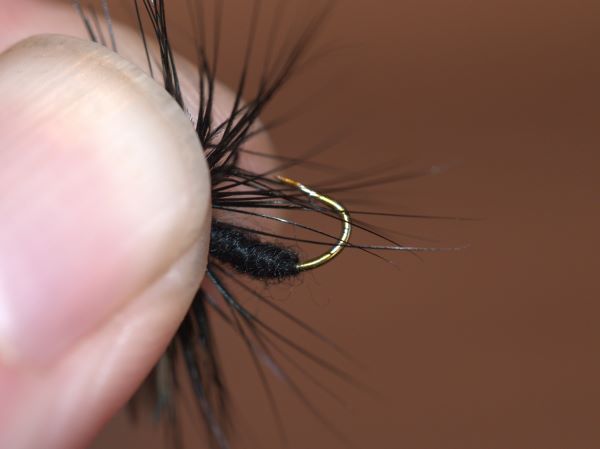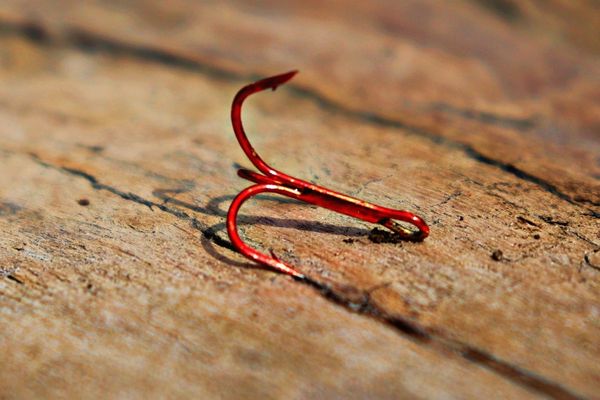Take a glance at the hook section of any fishing store and it quickly becomes apparent that fishing hooks are sold in many different colors. Some examples include black, silver, gold, red, and bronze, I have even seen fancy dual-color hooks and various exotic shades.
So hooks come in many colors. Does it matter? Do the fish care?
I will share my thoughts.
When bait fishing, I have not noticed any difference with regard to catch rate when changing hook colors. It is also a similar story when lure or fly fishing. So from a fish catching perspective, I personally do not believe it matters. If it does have an impact it is minor and likely only in the clearest of water.
Now, I am only one opinion, and there are contrasting views out there. I will now share them.
Gold and Silver hook:
Some fishermen feel, in very clear water the ‘flash or shine’ given off by a shiny gold or silver color hook acts as a sort of a ‘hot spot’ attractor that can catch the attention of fish. This is a similar principle to how fly fishermen might use a golden bead to add a flash of color.
There are also gold plated hooks. They are rare, but there used to be a belief that because gold is a noble metal, that fish would not get a metallic taste in their mouth resulting in a better hookup percentage.
Black hook
Supporters of black fish hooks believe they are more difficult for fish to see. The dark tone blends in with the surroundings increasing the chances that a wary fish will take the bait.
Red hooks
Red hooks are popular for two main which I understand, but I do not entirely agree with.
The first is that the red of the hooks appears like a small trail of blood or injury which can trigger fish to strike. Supposedly extra effective on topwater lures, I doubt it will make a difference for deeper presentations.
The second reason is that red is the first color to lose its intensity in deeper water. So that red hook quickly appears as a dull gray hook in deeper water making it more difficult for the fish to see.

Hook color is also an indicator of the hook coating.
Modern fishing hooks are typically made out of high carbon steel, stainless steel or steel alloyed with vanadium. High carbon steel is by far the most common, with stainless steel having some saltwater applications, while vanadium hooks, for the most part, are only used in tiny hooks for fly fishing.
What gives a high carbon steel hook its color is not the metal itself but a protective coating or finish. Some common coatings include nickel, tin, bronze, zinc, vanish, and in some rare cases even gold.
Nickle coating
I personally like hooks that have a nickel finish, some are more silvery while others are darker. I use them the most because they are the most common hook coating on the market. They seem very durable and the coating seems to last better than most. Although, technically the underlying hook is nearly always identical. I feel the coating does make a difference in longevity.
Red coating
I believe several materials are used for a red finish, most common I believe is tin while other hooks use a sort of vanish. These coatings tend to be a bit soft. I have had it chip off quite readily revealing an underlying gold color coat. So over time, red hooks can turn into gold hooks. That underlying gold primer layer does seem to be very durable and corrosion resistant. I have not tested it, but apparently, it is 3x more corrosion-resistant than nickel.
Bronze coating

Bronzed hooks corrode the fastest, so they are really only seen for freshwater applications. Many fly hooks for trout fishing are bronzed. This allows them to rust away in a reasonable amount of time if a trout were to break the line.
Galvanized / zinc
Some, mostly cheaper hooks have a galvanized finish. These hooks are slightly more rust-resistant than the ones with a bronze finish.
Color coatings.
I have some experience with black and various color hooks. These coatings seem to be some sort of thin paint like finish or probably vanish. In my experience, the coating is rather soft, and the hooksy rust fairly quickly.
Stainless hooks
Stainless steel hooks typically contain a nickel alloy that makes them extremely corrosion resistant. These hooks are not typically coated and are bare, silvery metal. They are not a good choice for catch-and-release fishing. Any hook that does not get removed, is never going to rust out by itself.
Gold plated
There are gold plated hooks, and gold color hooks. They are not the same. The first are plated in a thin layer of real gold, the latter is coated with some sort of gold color finish.
Hooks that are gold plated are now rare, gold does offer excellent corrosion resistance. Some people believed that because gold is a noble metal, gold plated hooks would have less taste, so fish were less likely to reject them.

